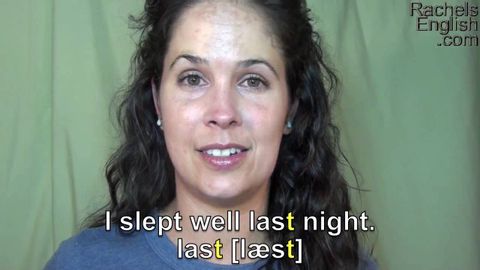
Subtitles & vocabulary
Examples: how to pronounce T: American English Pronunciation
00
Sam posted on 2015/04/08Save
Video vocabulary
sentence
US /ˈsɛntəns/
・
UK /'sentəns/
- Transitive Verb
- (Of a judge) to decide the punishment of
- Noun
- Official punishment given by a court of law
- Set of words that make a whole statement
A1
More sound
US /saʊnd/
・
UK /saʊnd/
- Adjective
- Sensible, dependable and reliable
- Unbroken or undisturbed, as of sleep
- Noun (Countable/Uncountable)
- Unique quality that characterizes a style of music
- Waves traveling in air or water that can be heard
A1TOEIC
More part
US /pɑ:rt/
・
UK /pɑ:t/
- Noun
- Division of a book
- Ratio of something, e.g. 3 of gin, 1 of tonic
- Transitive Verb
- To make a line in a person's hair, by using a comb
A1TOEIC
More word
US /wɚd/
・
UK /wɜ:d/
- Noun (Countable/Uncountable)
- Unit of language that has a meaning
- Promise
- Transitive Verb
- To express something by choosing particular words
A1
More Use Energy
Unlock All Vocabulary
Unlock pronunciation, explanations, and filters
